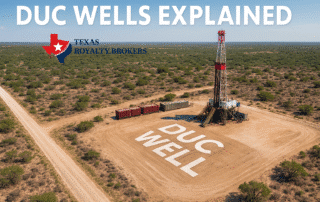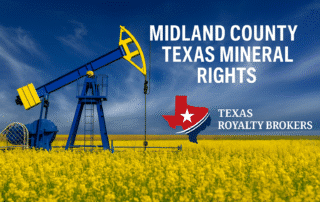Mineral Rights Value in Texas
Mineral Rights Value in Texas Most mineral owners in Texas have no idea what their rights are really worth. To be fair, it’s not their fault. Real information about mineral rights value is extremely difficult to find, and most of what’s out there is vague, outdated, or written to benefit mineral buyers. That’s why this guide is different. We’re going to walk you through how mineral rights value really works in Texas. This guide was written specifically for Texas mineral rights owners. We’ll break down the key factors that drive value, how mineral buyers evaluate deals when they[...]
Mineral Rights in Colorado
Mineral Rights in Colorado If you own mineral rights in Colorado, there’s a good chance you’ve wondered what they’re worth or whether now is the right time to sell. Maybe you inherited them and aren’t quite sure what you have, or maybe you’ve been getting offers in the mail and want to make sure you don’t leave money on the table. Either way, understanding mineral rights in Colorado is the first step to making a smart decision. Colorado is a unique state when it comes to oil and gas activity, and depending on where your minerals are located,[...]
What Is a Division Order? A Simple Guide for Mineral Owners
What Is a Division Order? A Simple Guide for Mineral Owners If you just received a division order and you're not sure what it means, don’t worry. You're definitely not the only one. These documents can look confusing at first glance, especially if you're new to owning mineral rights or this is your first producing well. The good news is that a division order usually shows up when a well is producing and the operator is preparing to start royalty payments. That’s a big milestone. Before you sign anything, it's important to understand what you're looking at and[...]
DUC Wells Explained: Mineral Owner Guide
DUC Wells Explained: Mineral Owner Guide If you own mineral rights, you may have heard the term “DUC well” and wondered what it means for you. DUC stands for “drilled but uncompleted.” In simple terms, it is a well that has already been drilled into the ground but has not yet been finished and brought into production. For mineral owners, this stage is a big deal. A DUC well usually represents one of the highest points of value your minerals will ever reach. The operator has already invested heavily by drilling the well, which means the chance of[...]
Oil and Gas Permits: A Mineral Owner’s Guide
Oil and Gas Permits: A Mineral Owner’s Guide If you’ve heard there’s a permit filed on your mineral rights, or you’re just trying to understand what that even means, you’re in the right place. A drilling permit is one of the strongest signs that an operator is planning to drill. It’s a big step forward in the development process, and it can have a major impact on the value of your mineral rights. For many owners, this is the first real indication that activity is headed their way. But what exactly is a permit? How do you know[...]
Decline Curves Explained: A Guide for Mineral Owners
Decline Curves Explained: A Guide for Mineral Owners Decline curves are one of the most important concepts in oil and gas, but also one of the least understood by mineral owners. A decline curve shows how oil and gas production from a well naturally falls over time. At first, new wells generate strong royalty checks, but those high numbers almost always come down quickly as production drops. For mineral owners, understanding decline curves is essential. They explain why royalty income changes from month to month and also play a major role in how buyers calculate what your minerals[...]
Mineral Rights in Wyoming
Mineral Rights in Wyoming If you own mineral rights in Wyoming, you might be wondering what they’re actually worth and what you can do with them. Whether you inherited them years ago or recently started receiving lease offers, it’s not always easy to figure out the best way to manage mineral rights. Wyoming has a long history of oil and gas production. With major activity in places like the Powder River Basin and Green River Basin, the state continues to be a hotspot for energy companies. That’s good news for mineral owners, but it also means there’s a[...]
Mineral Rights in Louisiana
Mineral Rights in Louisiana If you own oil and gas mineral rights in Louisiana, this is the guide you’ve been looking for. Whether you inherited them, bought them, or just recently found out you own them, it can feel overwhelming trying to figure out what they’re worth and what to do with them. Should you lease them? Sell them? Hold onto them? And how does Louisiana’s unique legal system affect your rights? In this post, we’re breaking it all down in plain English. You’ll learn how mineral rights work in Louisiana, what makes them valuable, and most importantly[...]
Midland County Texas Mineral Rights Guide
Midland County Texas Mineral Rights Guide Midland County, Texas is a major player in the oil and gas industry, producing a significant amount of oil and gas each year. In fact, the Permian Basin, which encompasses Midland County, is one of the most prolific oil-producing regions in the world. This has made mineral rights in Midland County highly valuable and sought after by investors and companies looking to tap into the region's abundant resources. If you own mineral rights in Midland County and are considering selling them, it's important to understand the process and what steps you can[...]
Mineral Deed
Oil and Gas Mineral Rights Deed What exactly is an oil and gas mineral rights deed? If you own mineral rights or you're thinking about selling them, you've probably come across the term "mineral rights deed." But what exactly does that mean? A mineral rights deed is a legal document that transfers ownership of oil and gas mineral rights from one party to another. It's the paperwork that makes everything official. Without it, there's no legal proof that you actually own the rights or that someone else owns them after a sale or inheritance. This is different from[...]











